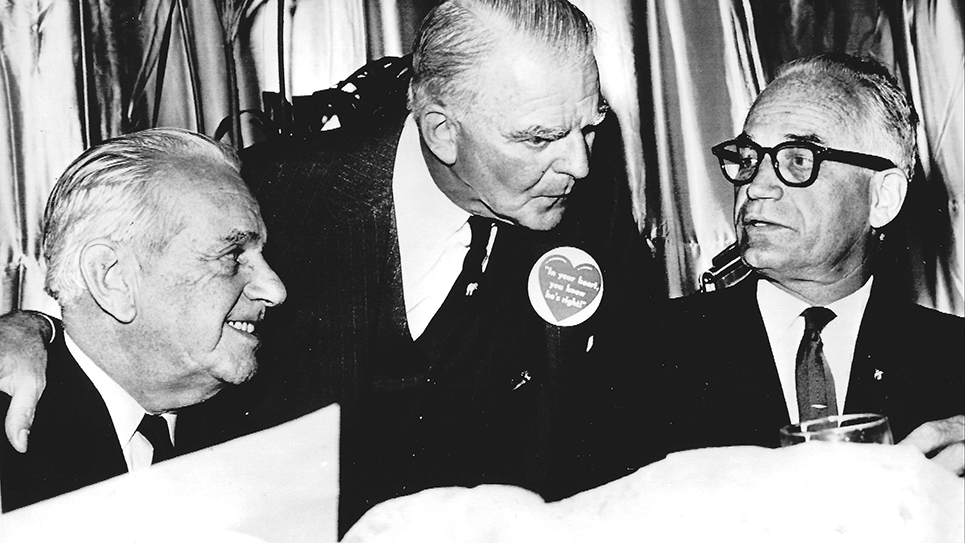By Tom Mattingly
Three events in the mid-1960s helped define the era in Knoxville basketball history and the immediate future of the University of Tennessee basketball program.
The protagonists in one specific drama were Bill Justus and Jimmy England, who were playing for Bob Fry at Fulton High School and Carroll Smith at Holston High School, respectively.
They joined players such as Jay Cole and Bill Young at South, Tommy Everette at Gibbs, Ron Widby at Fulton, and Kent Hollenbeck at Bearden, among others, to dominate and define the games. The gyms were small, the crowds were packed in and close to the floor, and rivalries were intense.
The memory banks hark to a night in early 1965, as a home-standing Holston quintet, led by England, then a sophomore, squared off against a Fulton five featuring senior Bill Justus.
Tennessee head coach Ray Mears showed up to watch the contest, mainly looking at Justus, but obviously filing away England’s name for future reference. There wasn’t a seat to be had. However, when Mears entered wearing his trademark orange blazer, the waters parted, and his entourage found seats in the Holston student section. Mears knew how to make an entrance.
Justus ended up at Tennessee in 1965-66. England was Tennessee’s “Mr. Basketball” in 1966-67. Both were two-time All-SEC selections. They played together in the 1968-69 season for the Vols. Both are in the Knoxville and the Tennessee Sports Halls of Fame.
Justus was part of the school’s “100 Years of Volunteers All-Time Team” and is in the Tennessee Athletic Hall of Fame. England somehow missed the cut on both selections, with inquiring minds wondering how he could have been passed over.
There was also a significant national moment (with a U. T. connection) on February 14, 1966. Rick Mount, the pride of Lebanon, Ind., became the first high school athlete representing a team sport to appear on the cover of Sports Illustrated. Frank DeFord authored a six-page story, with a brief mention that the University of Tennessee was one of eight schools Mount was considering visiting. He ended up at nearby Purdue.
More than one author has indicated Mount was a “pure jump shooter,” indicating everyone else was competing for second place. Consider that the prep Class of 1966 included Mount, but also Dan Issel, Calvin Murphy, Bob Lanier, and Pete Maravich, known best in years to come as “Pistol Pete.”
In 1967, there was a never-to-be-forgotten week in mid-March. Holston stormed through the state tournament to the finals against Alcoa at the brand new Stokely Athletics Center on campus, defeating Chattanooga Howard, Trenton, and Johnson City along the way.
Jim Bailes, now a retired United Methodist minister, assembled a special edition of the Holston student newspaper chronicling each game. Sadly, he doesn’t have them today, but, if anyone does, hire security. They’re valuable.
Making the state finals was good. Having to play Alcoa wasn’t. The Tornadoes had ended the 1966 Holston season with a win at the Armory-Fieldhouse in the Region 2 semifinals. Alcoa had also defeated the Warriors a week earlier in the finals of the 1967 Region 2 tourney, also at Stokely Center.
Before a packed house, the teams battled into three overtimes. Late in the third overtime, with the game tied, Warrior John Pittenger made a steal off Alcoa’s David Marsh, and England made the basket and canned a free throw to give the Warriors a 45-42 lead.
With 22 seconds left, Davis made a field goal, and all that had to happen was to get the ball in England’s hands or find another way to kill the remaining seconds.
The dream was apparently coming true. Happiness was headed eastward toward Chilhowee Drive in East Knoxville. It didn’t make it, veering instead toward Blount County.
Alcoa stole the ball and called time out with nine seconds left. David Davis, a marvelous two-sport player during his prep tenure, then canned a 12-footer off the right baseline that fell through the basket at the buzzer.
Alcoa had won. Announcers and journalists searched frantically for the right words to describe the scene.
Looking back, these prep stars from the mid-1960s are now in their early 70s. The newsprint from these times on and off the basketball court is fading and is best viewed on microfilm. There’s also videotape of the state championship game that is still hard to watch, at least from the Holston side.
These are memorable moments, not dimmed in the least by the passage of time.






